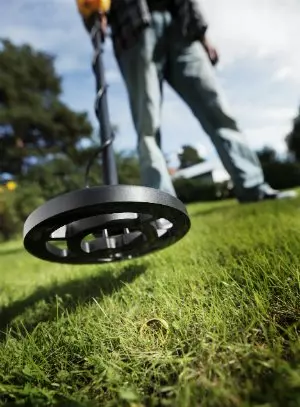Hey there, fellow homeowners! Ever wondered about the exact boundaries of your property? Maybe you're thinking about a new fence, a garden expansion, or just want to avoid any neighborly disputes. It's more important than you think, and luckily, figuring out those invisible lines isn't as hard as you might imagine!
This article breaks down everything you need to know about property lines. We'll cover simple DIY methods to get a general idea, plus the official steps needed for construction projects. We'll even tackle common questions and clear up some myths along the way. So, grab your favorite beverage, settle in, and let's get started!
Why Property Lines Matter More Than You Think
Think of property lines like the official rulebook for your land. They dictate what you can build, where you can plant, and even who's responsible for trimming that overgrown tree. Ignoring them can lead to frustrating arguments with neighbors, legal headaches, and even having to undo expensive projects. Yikes!
Easy Ways to Get a Feel for Your Boundaries
Let's start with some quick, budget-friendly ways to get a general sense of your property lines:
Sidewalk Clues
Take a stroll on your sidewalk. Notice those lines where the concrete sections meet? They often align with property lines because contractors frequently start and stop pouring along those boundaries. Also, check if the concrete looks a bit different on your side compared to your neighbor's - subtle differences can be another hint!
Streetlight Signals
Streetlights are frequently installed on property lines. While not foolproof, glancing at their placement can give you a rough idea of your yard's edges.

Getting Official: How to Find Exact Property Lines
While the above tips are helpful for a general sense, you'll need more official methods for anything beyond casual curiosity. This is especially important for construction projects where accuracy is key.
1. Visit the Zoning Department - Your Property Line HQ!
Your local zoning department is a treasure trove of information! They keep maps called "plats" that show the exact dimensions of your lot in relation to your neighbors'. Think of it like a giant puzzle, and your property is one piece. You can usually grab a copy of your plat for a small fee.
2. Time Travel with a Plat Map!
Remember those plats we talked about? They're like treasure maps for your property lines! They usually mark a "common point" or "point of beginning" (POB), often located in the middle of a nearby street. From there, the plat guides you with measurements to trace your property's boundaries. Just grab a measuring tape and channel your inner explorer!

3. Unearth the Mystery of Property Pins
Property pins are like hidden markers left behind by the original surveyors. These metal bars are usually driven into the ground at the corners of your property. If you have a metal detector, you can try your luck at finding them. Remember to call 811 before you dig to avoid hitting any underground utilities!
4. Beware of Wandering Survey Pins
Here's a word of caution: property pins aren't always reliable. Over time, they can be accidentally (or even intentionally) moved during construction or landscaping. Always double-check your findings against the measurements on your plat to ensure accuracy.
5. Digging into Your Deed (Literally!)
Your deed is like your property's birth certificate. It contains a legal description that outlines any changes to your property boundaries over time. You might be surprised to learn a previous owner bought or sold a sliver of land, affecting your property lines. You can usually get a copy of your deed from your county's register of deeds office.
6. Decoding Metes and Bounds Surveys
Some deeds use a system called "metes and bounds" to describe property boundaries. This method uses distances and directions from a fixed starting point. While accurate, it can feel like deciphering ancient text! If your deed uses metes and bounds, consider consulting a professional surveyor for help.

7. Explore the Digital World of Property Lines
Many counties now offer online access to property records and interactive maps. Check your county's website and search for terms like "Property Search" or "Parcel Search." These online tools can provide a good visual representation of your property boundaries, although they may not be precise enough for construction purposes.
When in Doubt, Call a Surveyor!
While DIY methods are great for satisfying your curiosity, remember that only a professional land surveyor can provide legally binding property line determination. If you're planning any construction, it's crucial to have a surveyor mark your property lines to avoid legal issues and ensure your project complies with building codes.
FAQs: Your Burning Property Line Questions Answered!
Can I survey my own property?
You can try! Using your deed and plat, you can attempt to measure and mark the boundaries. However, remember that only a professional survey holds legal weight.
How do I see property lines on Google Maps?
Type in your address and zoom in. While Google Maps displays property lines in some areas, this feature is not available everywhere.
How do I find my property's GPS coordinates?
Again, Google Maps can help! Zoom in on your property, right-click, and select "What's here?". The GPS coordinates will appear at the bottom.

Can a neighbor remove survey stakes?
No, they shouldn't. Property pins are meant to be permanent markers. However, they can be moved accidentally or even misplaced, so always verify their location.
How do you mark property corners?
Only licensed surveyors are authorized to mark property corners with official markers.
What's the deal with "squatter's rights"?
Some areas have laws (often referred to as "adverse possession") where someone can claim ownership of land they've occupied openly and continuously for a specific period. However, these laws are complex and vary widely, so don't rely on hearsay.
Property Lines: Knowledge is Power (and Peace of Mind!)
Understanding your property lines is essential for any homeowner. Whether you're embarking on a new project, resolving a boundary dispute, or simply want to know your land's limits, this guide has hopefully given you the knowledge and confidence to "stay on your side of the fence" – both literally and figuratively!











